Understanding the Value of Your Antique Gold and Silver Items
Determining the value of antique gold and silver items is a multifaceted process that entails more than just a superficial assessment. One of the primary factors to consider is the purity and weight of the metals. Gold purity is commonly measured in karats, with 24 karats representing pure gold, while silver purity is indicated by the percentage of silver content, typically marked as sterling (92.5% pure silver). Accurate measurement of weight can also provide a baseline value, though it is not the sole determinant of worth.
The historical and aesthetic significance of the items plays a crucial role in their valuation. Items with rich historical backgrounds or those crafted in notable periods often command higher prices. The age of an item can enhance its value, especially if it is associated with a particular historical event or era. Rarity is another critical aspect; items that are scarce or unique tend to be more valuable. Furthermore, exceptional craftsmanship, including intricate designs and superior workmanship, can significantly elevate the item’s worth.
Condition is a vital factor in assessing the value of antique gold and silver items. Items that have been well-preserved, with minimal wear and damage, are generally more valuable than those in poor condition. However, some degree of wear is often expected and can sometimes add character to the piece.
Conducting preliminary research is essential before approaching potential buyers. Start by checking hallmark stamps, which can provide valuable information about the item’s origin, maker, and purity. Consulting with experts, such as antique appraisers or jewelry specialists, can offer professional insights into the item’s worth. Additionally, utilizing online resources, including auction house records and collector forums, can help approximate the value of similar items.
By understanding these key factors and conducting thorough research, sellers can better position themselves to achieve fair and profitable transactions for their antique gold and silver items.
Maximizing Your Profits: Tips for Selling Antique Gold and Silver
When aiming to secure the best price for your antique gold and silver items, it is crucial to choose the right selling platform. Each option, whether online marketplaces, auctions, or local dealers, has its unique advantages and disadvantages.
Online marketplaces like eBay or specialized platforms such as Ruby Lane offer broad exposure to a global audience, potentially driving up the price through increased competition. However, these platforms often charge fees and require significant effort in creating compelling listings. Auctions, whether traditional or online, can generate high prices if multiple bidders are interested, but they also carry the risk of low turnout and final prices being lower than expected. Local dealers provide a quicker and more straightforward selling process, but they may offer lower prices due to their need to resell the items at a profit.
To present your items attractively, start by cleaning them carefully. Use appropriate cleaning methods for gold and silver to avoid damaging the antique value. For photography, use natural light and a plain background to highlight the details of your items. High-quality, clear images are critical; consider multiple angles and close-ups of any unique features or hallmarks.
Creating a compelling listing is essential. Provide detailed descriptions, including historical context, condition, and any provenance information. Highlight any unique or rare aspects of your items to attract serious buyers.
Obtaining multiple appraisals and quotes is vital to ensure you receive a fair deal. Different appraisers may have varying levels of expertise and market knowledge, which can affect their valuations. Gathering several opinions helps you gauge the true value of your items and provides leverage in negotiations.
Effective negotiation is key to maximizing profits. Be informed about the current market trends for antique gold and silver, including any recent price fluctuations. Approach negotiations confidently, armed with your research and multiple appraisals, and be prepared to walk away if the offer does not meet your expectations.



